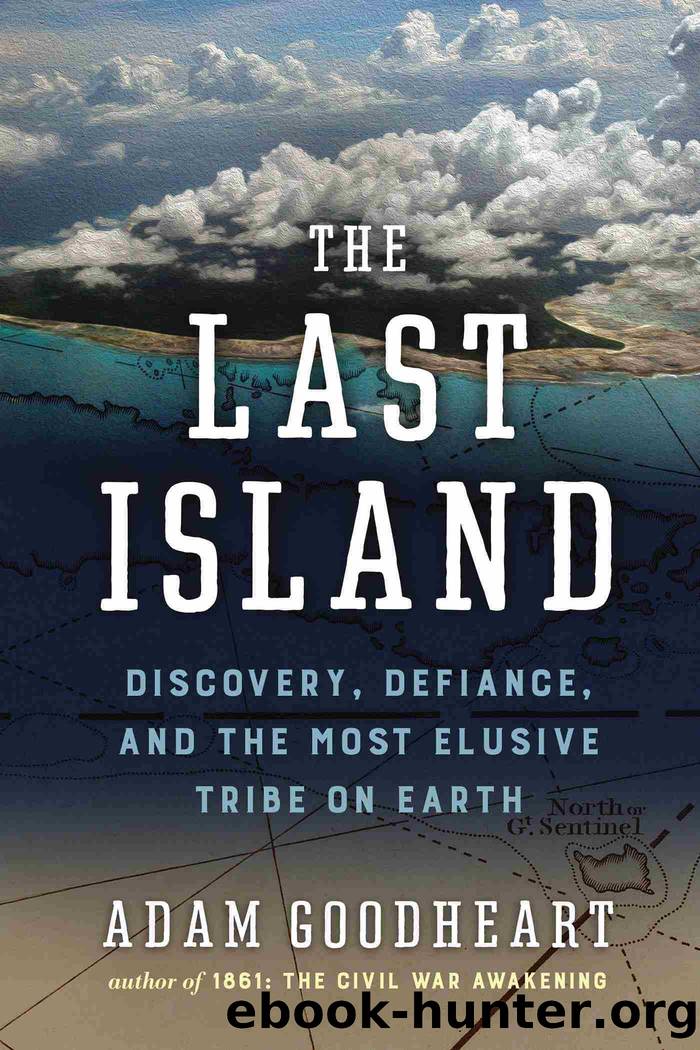The Last Island by Adam Goodheart

Author:Adam Goodheart
Language: eng
Format: epub
Publisher: David R. Godine, Publisher
Published: 2023-12-15T00:00:00+00:00
Beneath the high-arched Victorian ironwork of the Pitt Rivers anthropological museum at the University of Oxford, in a large glass vitrine labeled âTreatment of the Dead,â amidst Egyptian sarcophagi fragments, Nicobarese funeral headdresses, and an ancient Celtic mortuary urn, rests the skull of a person who lived and died in the Andaman Islands sometime in the mid-nineteenth century. Deep-socketed, daubed with dark-red ochre, and adorned with a delicate fringe of dentalium shells, it seems even more deathly than ordinary human remains. Despite the jumble that surrounds it, this curio catches the attention of many museumgoers, and often appears a day or two later in the visitorsâ Instagram feeds.
Nothing is known about who the dead man or woman was, the family he or she came from, or the village where he or she lived. A shelf card from the 1880s records simply that the relic was donated to the university by one of the early overseers of the Andaman Home. It also explains that the skull was that of a âdeceased relativeâ and that the mourner who wore itâ âprobably a parent, spouse, or childâ âdid so to honor the departed loved one and also to ward off disease and misfortune, in keeping with native traditions. (Later anthropologists have come to understand this practice as deeply bound up with the native Andamanese concept of cyclical time and the enduring presence of the past.) The card does not reveal how these cherished remains left the familyâs possession and came into European hands.
Early colonial officials, anthropologists, soldiers from the local garrison, and occasional passing tourists all avidly collected Andamanese artifacts: by bartering for them, stealing them from the nativesâ huts, picking them up from the ground after skirmishes, or simply nagging and wheedling until the owners were convinced to give them up. Those made with human remains held a particular attraction, especially at a time when scientists in Europe and America were beginning to make serious study of the human body in all its ethnic variations. In one of the Reverend Mr. Corbynâs reports, he wrote that despite the nativesâ strong reluctance, he had eventually âpersuadedâ them, âfor scientific purposes,â to let him take one especially well-ornamented skull, probably that of âan important chief.â
In fact, the skull could not have been that of an âimportant chief,â since the concept of a chief, or indeed a political ruler of any kind, did not then exist among the Andamanese. Traditionallyâ âindeed, among the Onge and Jarawa to this dayâ âdecisions in the tribe are made consensually, with particular deference paid to elders, both men and women. But this was, of course, inconceivable to the loyal subjects of Queen Victoria.
Throughout the world today, one can find bits and pieces of the nineteenth-century Andamanese, sometimes still on public display, but more often removed into deep museum storage. There are four skulls at the Smithsonian in Washington. A skull and mandible at the Museum der Kulturen in Basel. Four skulls and five mandibles at the Royal College of Surgeons in London. Another skull and jaw in Vienna.
Download
This site does not store any files on its server. We only index and link to content provided by other sites. Please contact the content providers to delete copyright contents if any and email us, we'll remove relevant links or contents immediately.
| Civilization & Culture | Expeditions & Discoveries |
| Jewish | Maritime History & Piracy |
| Religious | Slavery & Emancipation |
| Women in History |
Cecilia; Or, Memoirs of an Heiress — Volume 1 by Fanny Burney(32495)
Cecilia; Or, Memoirs of an Heiress — Volume 2 by Fanny Burney(31909)
Cecilia; Or, Memoirs of an Heiress — Volume 3 by Fanny Burney(31888)
The Secret History by Donna Tartt(18943)
Sapiens: A Brief History of Humankind by Yuval Noah Harari(14314)
Leonardo da Vinci by Walter Isaacson(13232)
The Radium Girls by Kate Moore(11969)
Sapiens by Yuval Noah Harari(5321)
How Democracies Die by Steven Levitsky & Daniel Ziblatt(5169)
The Wind in My Hair by Masih Alinejad(5056)
Homo Deus: A Brief History of Tomorrow by Yuval Noah Harari(4870)
Endurance: Shackleton's Incredible Voyage by Alfred Lansing(4715)
Man's Search for Meaning by Viktor Frankl(4500)
The Silk Roads by Peter Frankopan(4488)
Millionaire: The Philanderer, Gambler, and Duelist Who Invented Modern Finance by Janet Gleeson(4417)
The Rape of Nanking by Iris Chang(4165)
Joan of Arc by Mary Gordon(4051)
The Motorcycle Diaries by Ernesto Che Guevara(4050)
Hitler in Los Angeles by Steven J. Ross(3923)
